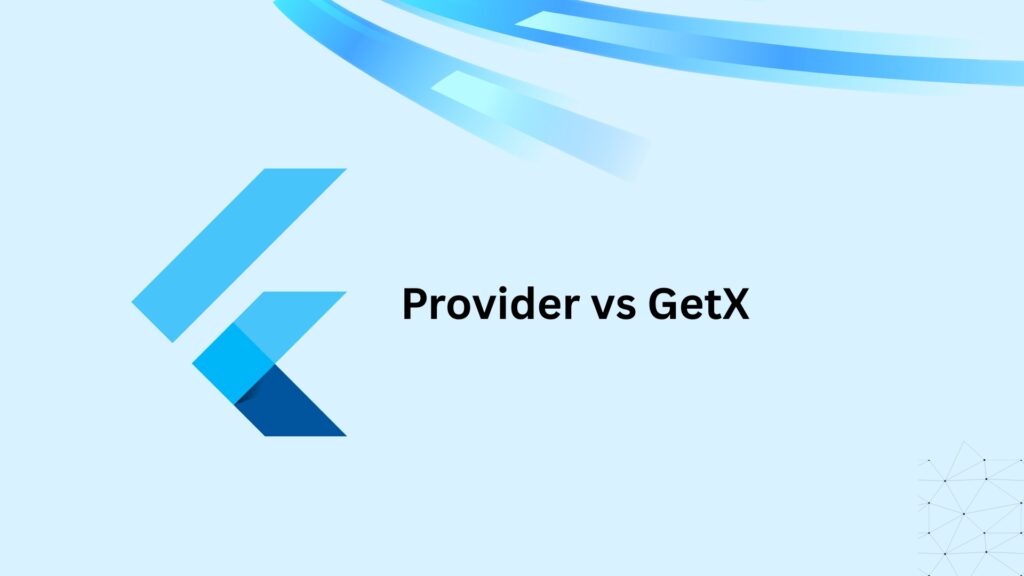As your Flutter app grows in size and complexity, managing the state, meaning the data that your app uses and reacts to, becomes increasingly important. That’s where state management solutions come in. They help developers structure apps better, reduce bugs, and make code more maintainable.
Two of the most popular state management tools in the Flutter ecosystem are Provider and GetX. While both solve the same problem, they do it in very different ways. Choosing the right one depends on your project’s size, complexity, team preferences, and long-term goals.
In this blog, we’ll break down Provider vs GetX in a simple, human-friendly way, helping you understand how each works, where they shine, and which one might be right for you.
What Is State Management in Flutter?
Before diving into the tools, let’s clarify what state means.
In Flutter, “state” refers to data that can change over time, like a user’s login status, the contents of a shopping cart, or the number displayed on a counter. State management is how your app tracks and reacts to these changes efficiently.
When your app is small, Flutter’s built-in setState() is usually enough. But once your app starts growing, using it setState() everywhere gets messy and hard to maintain. That’s when solutions like Provider and GetX come into play.
What is a Provider?
Provider is a state management solution developed by the Flutter team. It’s often recommended in the official documentation, and many developers view it as the “Flutter way” to manage state.
✅ Pros of Provider:
-
Backed by the Flutter team: It’s well-documented and actively maintained.
-
Good for large-scale apps: Encourages clean architecture using
ChangeNotifierandConsumer. -
Great community support: Tons of tutorials and real-world examples.
-
Encourages separation of concerns: Promotes best practices like separating business logic from UI.
❌ Cons of Provider:
-
Boilerplate code: You need to write more code for setup (e.g., creating classes for
ChangeNotifier, wiring upMultiProvider, etc.). -
Can get verbose: As the app grows, managing multiple providers and consumers can become a bit cumbersome.
-
Steeper learning curve for beginners: Especially when combined with architecture patterns like MVVM or Clean Architecture.
What is GetX?
GetX is a lightweight and powerful package for Flutter that combines state management, dependency injection, and route management into one.
✅ Pros of GetX:
-
Minimal boilerplate: You can manage state with just a few lines of code.
-
Reactive programming made easy: Observables (
Rx) automatically update the UI when data changes. -
Built-in features: Includes routing, dialogs, and snackbars—great for reducing dependencies.
-
Very fast: Known for its performance and minimal rebuilds.
❌ Cons of GetX:
-
Not officially endorsed: It’s a community-driven package, not maintained by the Flutter team.
-
Overly abstract for some: The simplicity can hide complexity, which might make debugging harder in large apps.
-
Code structure concerns: Because it’s so flexible, it can encourage poor architecture if not used responsibly.
When to Use a Provider
Choose Provider if:
-
You’re working on a large-scale app where clean architecture matters.
-
You prefer an opinionated structure that promotes the separation of UI and business logic.
-
You want something that aligns closely with Flutter’s core principles.
-
You’re working with a team and need maintainable, testable code.
When to Use GetX
Choose GetX if:
-
You’re building a small to medium app and want to move fast.
-
You need a quick MVP or prototype with minimal setup.
-
You like working with reactive programming and want updates to happen automatically.
-
You want an all-in-one solution that handles state, routing, and dependency injection.
Real-World Example: A Counter App
Let’s compare a simple example, a counter app using both solutions.
Provider:
You’d create a ChangeNotifier class, wire it up with a ChangeNotifierProvider, and update the value with notifyListeners().
GetX:
You’d define an observable RxInt, and the UI would react to changes automatically with Obx.
Result? GetX is quicker to set up but less structured. Provider takes more setup, but it encourages cleaner organization.
Final Thoughts
There’s no one-size-fits-all answer in Flutter state management. Both Provider and GetX are powerful tools, and the right choice depends on your project requirements, team size, and development style.
If you’re just starting or building something fast, GetX offers simplicity and speed. If you’re aiming for long-term scalability and maintainability, Provider might be the safer bet.
Either way, the key is to understand the tool before diving in. Because the better you manage your app’s state, the better your app will perform, and the happier your users will be.
